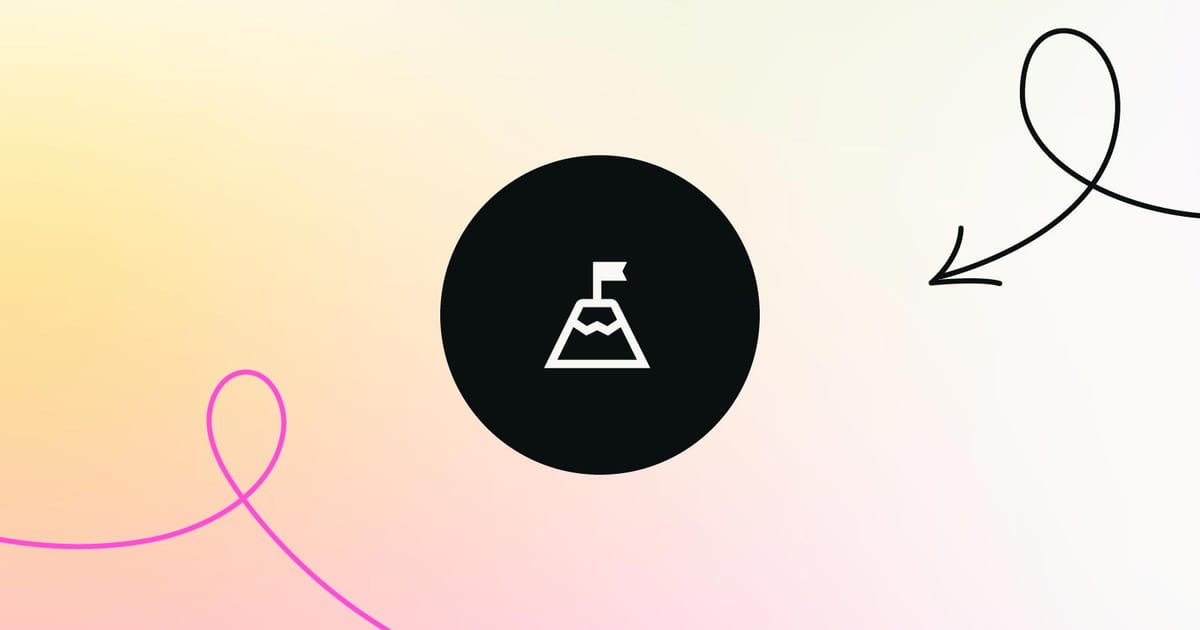As a customer marketer, you're probably well-versed in the art of attracting new clients and nurturing existing relationships. But have you ever considered the crucial role that customer onboarding plays in enhancing customer loyalty and retention?
You've put in the hard work to win over a new customer, through a combination of compelling marketing campaigns and stellar sales pitches. But the true test of your success lies in what happens next.
Onboarding is the make-or-break moment when a prospect becomes a fully-fledged, loyal customer. Get it right, and you'll be rewarded with customers who stick around, upgrade their plans, and sing your praises to their networks. Get it wrong, and you risk losing that hard-won customer before they’ve even had a chance to experience the full value of your offering.
In this article, we'll dive deep into:
- The value of understanding your customer
- How to personalize the onboarding journey
- The value of creating engaging onboarding experiences
- Ways to measure your onboarding success
Understand your customers
This one’s a no-brainer. To begin customizing your onboarding experience, you’ve got to get to know the customers going through it. This comes from understanding who you want to attract, your target audience, and those who’ve successfully gone through the onboarding process before, your existing customers.
Some ways to get started are:
Gather customer data
As mentioned above, your shouldn’t just be looking at customers you want to attract, but at your customer base as a whole. This includes existing and churned customers. In this early stage, you’ll want to have as much information as possible in order to better understand how to move forward, which is where data comes in.
We’ve given a couple of examples of the data you should be gathering for each type of customer:
For target customers
- Demographic information (age, gender, location, income level, etc.)
- Psychographic data (interests, values, lifestyle, behavior patterns, etc.)
- Online browsing and search history
- Interaction with marketing campaigns and content
- Purchase intent and product preferences
For existing customers
- Purchase history and patterns
- Product usage data
- Engagement with the brand (website visits, app usage, social media activity, etc.)
- Feedback and sentiment (surveys, reviews, support interactions)
- Lifetime value and churn risk
For churned customers
- Reasons for churn (exit interviews, analytics on drop-off points)
- Products/services they used and how they used them
- Interactions leading up to churn (support tickets, marketing touchpoints)
- Demographic and psychographic data to identify patterns
- Potential triggers for re-engagement
The key is to gather a holistic view of customers across the entire lifecycle - from prospect to loyal customer to churned user. This will allow you to start segmenting audiences and personalize experiences, optimize parts of the customer journey pre and post-onboarding, and proactively address future risks.

Create customer personas
Now, what do you do once your gathered and organized these data points? This is where personas reign champion. You should already have a few ideal customer personas. These are hypothetical personas, based on the data gathered above, that project an image of your ideal customer.
Then begin to think about the types of customers outside your existing customer base. Where would they fit within the common characteristics of your loyal customers? Where do they differ from it?
A great way to start is to think about this is by identifying pain points and goals that are more specific, but can still be segmented.

Identify key customer goals and pain points
Look at your data for churned customers to see where your onboarding experience is lacking. Look at existing customers, from repeat purchaser all the way to loyal advocates for common goals.
Where should you look to identify these points? That’s easy, just ask! This is where surveys, focus groups, and customer communities really come in handy. Gather the research about your customers from your customers.
Don’t forget that while we’re focussing on the onboarding phase of the customer journey, you should be taking into account the journey as a whole as well.

Now you should have everything you need to customize the onboarding experience for each of these customer segments.
Personalize the onboarding journey
To personalize and customize the onboarding experience based on the customer data and personas gathered, you’ll want to think about your onboarding experience as branching paths. Each path will lead to a tailored experience for that customer segment.
Tailor your content to customer segments
For each customer segment, and the personas within it, begin by analyzing what you know about their demographic, and their goals to identify what their specific needs are. Think about the specific goals and pain points of each.
Then you’ll be ready to develop onboarding content and materials that address these unique challenges and preferences for the different groups: this’ll be things like service information, tutorials, and resources.
You’ll also have to balance your company’s guide on messaging and using the language, tone, and visuals that resonate with the target audience.
Offer customizable onboarding paths
We’ve mentioned this before, but customizable paths are a must-have when it comes to onboarding that resonates with your audience.
You might want to create multiple onboarding tracks or journeys that customers can self-select based on their objectives, background, or level of expertise - or use the data gathered above to pre-select a path for them.
Personalization will however come down to how much control the customer has over their experience. Allow customers to choose the features, tools, or modules they want to focus on but don’t leave them to fend for themselves. Provide guidance and recommendations to help customers navigate the different onboarding paths available.
Use dynamic content based on user behavior
Another way to ensure your customers don’t get lost during the onboarding process is to have certain triggers within each path that offer additional educational resources, product recommendations, or next steps based on the customer's actions or inactions.
Building out a program that adapts and changes based on the customer's interactions, engagement, and progress isn’t a simple feat, but there are platforms or AI opportunities that can help.

It may be a longer process, but it’ll be worth it to see those churn numbers go down in the end!
Create engaging onboarding content
One place in which this system may fall short is in the presentation of the content. No one wants to be sitting around reading 2,000 or 3,000 words on how to use a specific product feature. Attention spans are short at the best of times, but they’ll be even shorter with customers who just want to get started with using your product.
Making the learning paths as enjoyable and useful as the product itself will make customers way less likely to ‘skip the tutorial’ and remain lost with your product.
Some ways to do this are to:
- Develop interactive tutorials and guides - Provide regular opportunities to apply the stuff they’re learning about as they go.
- Using video content effectively - Visual learners will thank you for this one, plus can help those impatient customers get through quicker if they crank up that playback speed!
- Gamification elements to increase engagement - Adding fun into your learning is never ever going to go amiss. Making learning a relaxing and enjoyable process will ensure customer sentiments toward your product are more positive from day one.

Measuring and optimizing onboarding success
So now you’ve put the work into this whole process, you’ll want to make sure it’s all going smoothly. Let’s talk a little bit about the way to measure and optimize your onboarding process.
Key metrics to track
Keeping things simple, begin with easy-to-understand quantitative data. This’ll be the thing that’ll first notify you to any issues within your onboarding system. Monitor metrics such as:
- Onboarding completion rate.
- Time to first value.
- Feature adoption.
- Churn rate.
- Onboarding completion rate: The percentage of customers who successfully complete the onboarding process.
- Time to first value: The time it takes for customers to achieve their first meaningful outcome or milestone.
- Feature adoption: The rate at which customers start using the core features or functionalities of the product/service.
- Churn rate: The percentage of customers who drop off or disengage during the onboarding phase.
These numbers will give you an easy indicator of overall success. But getting into the nitty-gritty, you’ll have to rely more on qualitative feedback.
Improvement based on customer feedback
Customers are first-hand users, so listening to what they say about the product experience is vital. They’ll be able to offer you more specific quantitative feedback, letting you know more about the sentiments of your customers. But they’re also the best resource for qualitative feedback too.
- Actively solicit feedback from customers at various stages of the onboarding process.
- Use a combination of quantitative (e.g., surveys, ratings) and qualitative (e.g., interviews, focus groups) methods to gather insights.
- Identify pain points, areas of confusion, or opportunities for improvement based on the customer’s feedback.
This information will give more specific areas for improvement, as offers you the opportunity to incorporate your learnings into the onboarding journey and refine the experience.
If you’re unsure how to best improve these specific areas, then a/b testing is your friend.
A/B test different onboarding approaches
Once you’ve identified key elements of the onboarding journey (e.g., content, navigation, communication, etc.) that can be tested and optimized, setting up a few different options for improvements and actively testing them on current customers is the best way to ensure you’re making the right choices.
To A/B test:
- Develop multiple variants of the onboarding experience, with controlled changes to the identified elements.
- Randomly assign new customers to the different variants and measure their performance against the key metrics.
- Analyze the results to determine the most effective onboarding approach and make data-driven decisions.
Conclusion
Gathering comprehensive customer data, developing targeted personas and segments, and employing personalization strategies, is a no-brainer strategy for designing effective onboarding experiences.
Measuring KPIs, testing different approaches, and incorporating continuous feedback allows for a flexible onboarding system that will continue improving in the long-term.
Adopting this holistic, data-driven methodology will empower you to create onboarding journeys that set customers up for long-term success with your brand.





